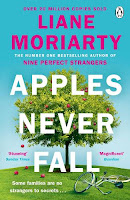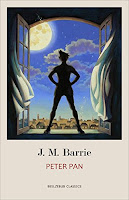 |
| (Amazon UK link) |
Desmond and Deirdre are the couple soon to celebrate 25 years of marriage; it’s clear from the start that they love parties, and - even more - love talking about the family photos that are taken for every milestone and party. They are in their late forties, but already empty-nesters. Their three children, Anna, Brendan and Helen, have all left home.
Anna, as the eldest (and the one closest to her parents) knows that it’s up to her to organise the party. She has lots of ideas, then decides that the best thing is to discuss it with her parents. The first chapter of the book is focussed on Anna and her boyfriend Joe, who (it’s clear) is dependent on her home and income. Anna works in a bookshop and Joe is an out-of-work actor.
Each chapter then switches to another of the main characters in the family and the original wedding party. We don’t see the meeting Anna has with her parents; instead, time gradually eases forward and we learn that people have received invitations, or that they’re thinking about what they might wear. It’s cleverly done; each chapter has a little subplot of its own, revealing secrets about the person concerned, and a bit more about some of the others.
Brendan is the subject of the second chapter. He lives in Ireland with his uncle, after escaping from what he perceived as pressure from his parents to be academic and work in an office. It’s a bit ironic, since his father, quarter of a century earlier, escaped from the bleak family farm to live in London.
Helen is perhaps the most interesting of the three: she’s a postulate in a convent, but the other nuns really don’t know if she’s suited to taking her vows. They all work in the community, and Helen is enthusiastic and big-hearted, but tends to make all kinds of mistakes. I liked Helen very much and felt a lot of empathy for her situation, and the secret that is revealed in her chapter.
Maeve Binchy had a gift for creating slightly larger-than-life but three dimensional people who are easy to distinguish from each other. And she was a master at ‘showing not telling’ - often we learn more about people other than the viewpoint character during the course of a chapter, from the conversations and thoughts of the person concerned.
There are some quite series themes covered sensitively such as teenage pregnancies, and adultery, as well as the gentler topics of lies, misunderstandings or miscommunications within families. Several people learn, over the course of the book, that the way they were living or the lies they were telling were unnecessary.
I’m very glad I re-read this book, which I liked very much and would recommend to anyone who likes this kind of women’s fiction. It was first published in 1989 so inevitably feels a bit dated; but the people are recognisable, and likeable, and I was sorry to close the last page and say ‘goodbye’ to them.
Review copyright 2024 Sue's Book Reviews



